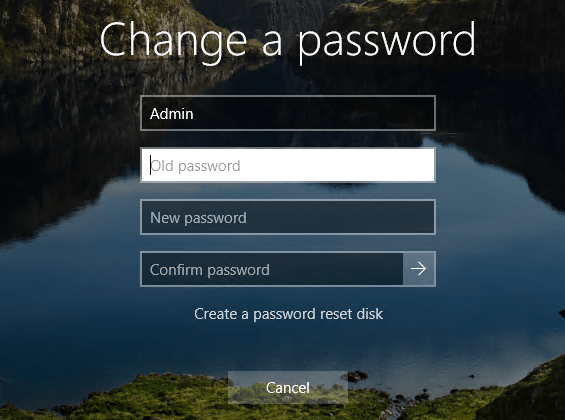Securing Your Digital Fortress: A Comprehensive Guide on How to Change Your Password in Windows 10

Introduction:
In the ever-evolving landscape of cybersecurity, maintaining a robust password is a cornerstone of safeguarding your digital presence. Windows 10, Microsoft’s flagship operating system, empowers users to take charge of their security by providing a straightforward and accessible process to change passwords. This comprehensive guide will delve into the multitude of ways users can change their passwords in Windows 10, ensuring a proactive approach to personal security and data protection.
1. Changing Your Password via Settings: The User-Friendly Approach
Windows 10 simplifies the process of changing your password through the intuitive Settings menu. Begin by clicking on the Start menu and selecting the gear-shaped icon for Settings. From the Settings menu, navigate to “Accounts” and then “Sign-in options.” Under the “Password” section, select “Change” to initiate the password modification process. Follow the on-screen prompts to verify your identity, enter the existing password, and create a new one. This user-friendly method is ideal for those who appreciate a straightforward, step-by-step approach.
2. Utilizing the Ctrl + Alt + Del Shortcut: A Classic Technique
A classic method that has stood the test of time in Windows environments is the Ctrl + Alt + Del shortcut. Pressing these keys simultaneously opens a security screen that includes options like Lock, Switch User, Sign Out, and Change a Password. Select “Change a Password,” and you will be prompted to enter your current password and then set a new one. This method is quick and accessible, making it a go-to option for users familiar with traditional Windows keyboard shortcuts.
3. Using the Command Prompt: A Commanding Approach
For users comfortable with command-line interfaces, the Command Prompt provides an alternative method for changing passwords. Press Win + X and select “Command Prompt (Admin)” to open the elevated Command Prompt. Once open, type “net user [username] *” (replace [username] with your actual username) and press Enter. You will be prompted to enter your current password and then set a new one. This method is particularly suitable for users who prefer a text-based interface and want to execute commands for password changes.
4. Employing the Windows PowerShell: A Scripting Solution
Similar to the Command Prompt, Windows PowerShell allows users to change passwords using a scripting approach. Press Win + X, select “Windows PowerShell (Admin),” and enter the following command:
powershellCopy code
Set-LocalUser -Name [username] -Password (ConvertTo-SecureString -AsPlainText "[new_password]" -Force)
Replace [username] with your actual username and [new_password] with your desired new password. Press Enter, and the password will be changed accordingly. This method is suitable for users who are comfortable with scripting and want to automate password changes through PowerShell.
5. Utilizing the Local Users and Groups Snap-in: A System Administrator’s Choice
Windows 10 provides an advanced tool for system administrators or users with elevated privileges – the Local Users and Groups snap-in. To access this tool, press Win + R, type “lusrmgr.msc,” and press Enter. In the Local Users and Groups window, navigate to “Users,” right-click on the user account for which you want to change the password, and select “Set Password.” Follow the on-screen instructions to set a new password. This method is ideal for users with administrative control who want a comprehensive tool for managing user accounts.
Conclusion: Fortifying Your Digital Defenses
In conclusion, changing your password in Windows 10 is a crucial aspect of maintaining a secure digital environment. The operating system provides users with a variety of methods, catering to different preferences and skill levels. Whether you opt for the user-friendly approach via Settings, the classic Ctrl + Alt + Del shortcut, command-line methods like Command Prompt or PowerShell, or advanced tools like the Local Users and Groups snap-in, Windows 10 ensures that users can proactively fortify their digital defenses. By incorporating these password-changing techniques into your routine, you contribute to a safer and more secure computing experience in the dynamic and interconnected world of Windows 10.







